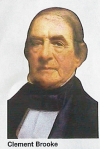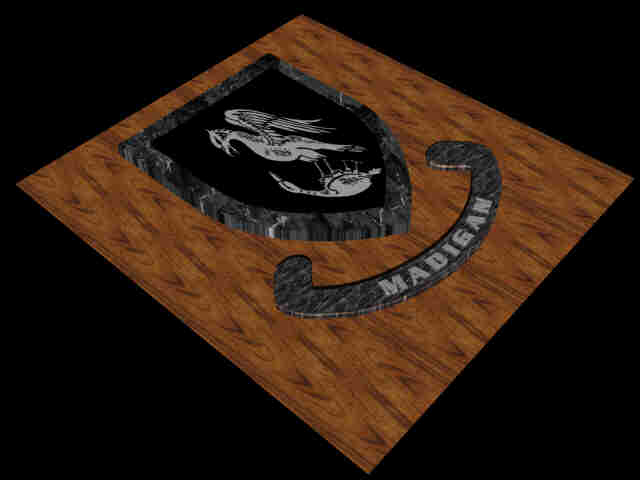Hopewell Furnace
Rt 345.
Warwick, Pa.
August 3, 1999
As we drove from our campground Sun Valley to
Valley Forge on Rt. 23, we passed a sign showing "Hopewell
Furnace National Historic Site. Since we were heading for Valley
Forge we didn't want to take the time to check it out then, but
did on our way back. Unfortunately the park was getting ready to
close for that day and it looked interesting enough for a trip
back. Next day (Aug 3) we started out for the trip to Hopewell
Furnace. The trip from Rt. 23 to Hopewell Furnace on Rt 345 was
lovely. It was a two-lane road, lined with trees on each side.
The only drawback is that the drive is through a National Park
area and there are restrictions as to width and length of
vehicles that can travel on it.
we drove from our campground Sun Valley to
Valley Forge on Rt. 23, we passed a sign showing "Hopewell
Furnace National Historic Site. Since we were heading for Valley
Forge we didn't want to take the time to check it out then, but
did on our way back. Unfortunately the park was getting ready to
close for that day and it looked interesting enough for a trip
back. Next day (Aug 3) we started out for the trip to Hopewell
Furnace. The trip from Rt. 23 to Hopewell Furnace on Rt 345 was
lovely. It was a two-lane road, lined with trees on each side.
The only drawback is that the drive is through a National Park
area and there are restrictions as to width and length of
vehicles that can travel on it.
Upon approaching the Hopewell Furnace buildings, all you see is a
 white building housing the Rangers' Office and
a small museum. However, if you look down over the hill you will
see an entire village. Before we went down to visit the village
we took time to find out something about Hopewell Furnace and its beginnings from Ranger Christine M. Almerico, Education
Coordinator.
white building housing the Rangers' Office and
a small museum. However, if you look down over the hill you will
see an entire village. Before we went down to visit the village
we took time to find out something about Hopewell Furnace and its beginnings from Ranger Christine M. Almerico, Education
Coordinator.
Hopewell furnace was originally built by Mark Bird in 1771. At
the time England was extremely concerned about the rapid
expansion of the industry in the colonies and the increasing
skill with which American ironmasters turned out cast and wrought
iron products. Due to this, England attempted to limit American
iron makers to just producing pig iron (rough cast bars) which
would be shipped to England and then processed into profitable
goods, which  would then be sold back to America. In spite
of these limitations, by the Revolution, American furnaces,
forges, and mills were turning out one-seventh of the world's
iron goods. Hopewell furnace was very successful due to
Pennsylvania's combination of abundant raw materials. By the time
Hopewell Furnace was built in Schuylkill Valley, Pennsylvania was
on its way to becoming the most important iron-producing colony.
Bird immediately began casting stove plates despite the British
ban, and when the war began he was a steady supplier of cannon
and shot to the Continental Army and Navy. As the war drew to an
end, however, Bird's financial troubles began to mount. Due to
these problems Bird ended up auctioning off what was then called
Hopewell Plantation at a sheriff's sale. Bird fled his remaining
creditors by moving to North Carolina. After this, Hopewell
changed hands several times until Clement Brooke (a son of one of
would then be sold back to America. In spite
of these limitations, by the Revolution, American furnaces,
forges, and mills were turning out one-seventh of the world's
iron goods. Hopewell furnace was very successful due to
Pennsylvania's combination of abundant raw materials. By the time
Hopewell Furnace was built in Schuylkill Valley, Pennsylvania was
on its way to becoming the most important iron-producing colony.
Bird immediately began casting stove plates despite the British
ban, and when the war began he was a steady supplier of cannon
and shot to the Continental Army and Navy. As the war drew to an
end, however, Bird's financial troubles began to mount. Due to
these problems Bird ended up auctioning off what was then called
Hopewell Plantation at a sheriff's sale. Bird fled his remaining
creditors by moving to North Carolina. After this, Hopewell
changed hands several times until Clement Brooke (a son of one of
 the owners) brought the operation to the peak
of its prosperity from 1816 to 1831. He presided over Hopewell
during its best years, when the furnace supplied a wide variety
of iron products to cities along the east coast. During this time
Hopewell used charcoal to fuel the huge furnace. In order to do
this an extremely large amount of timber was required. After
Brooke retired in 1848, Hopewell's owners found it increasingly
difficult to compete. They made efforts to keep up by building an
anthracite (coal) hot-blast furnace and installing a backup steam
engine, for the blast machinery. The new furnace was a failure,
and in any case their efforts only delayed the inevitable. Iron
plantations like Hopewell, were overtaken by the shift from the
age of iron and water power to the age of steel and steam, and
so, were unable to follow the industry into the 20th century. In
the summer of 1883, Hopewell Furnace made its final blast.
the owners) brought the operation to the peak
of its prosperity from 1816 to 1831. He presided over Hopewell
during its best years, when the furnace supplied a wide variety
of iron products to cities along the east coast. During this time
Hopewell used charcoal to fuel the huge furnace. In order to do
this an extremely large amount of timber was required. After
Brooke retired in 1848, Hopewell's owners found it increasingly
difficult to compete. They made efforts to keep up by building an
anthracite (coal) hot-blast furnace and installing a backup steam
engine, for the blast machinery. The new furnace was a failure,
and in any case their efforts only delayed the inevitable. Iron
plantations like Hopewell, were overtaken by the shift from the
age of iron and water power to the age of steel and steam, and
so, were unable to follow the industry into the 20th century. In
the summer of 1883, Hopewell Furnace made its final blast.
